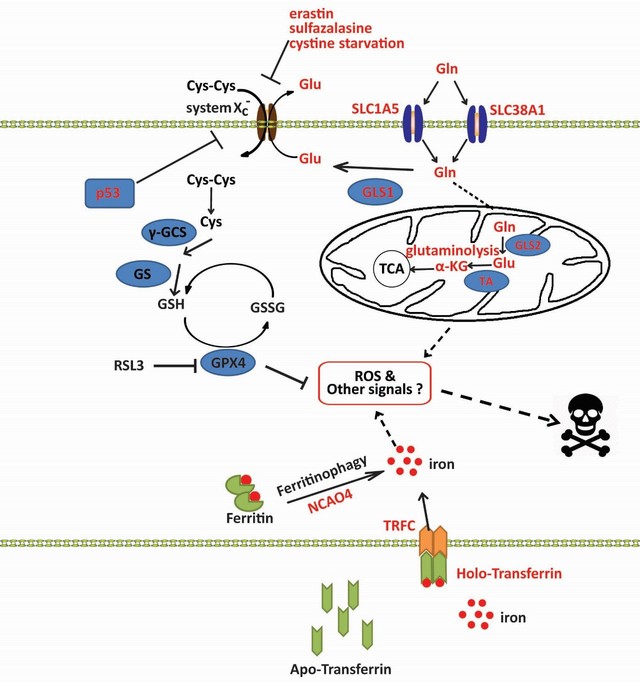Written by: Wang Ji
Translated by: Zhou Dongyi
Edited by: D. Parker
Date: May 22th, 2018
Recently, Gao Minghui's research group from the Life Science Center of HIT was invited to present a review in Current Opinion in Cell Biology (Impact Factor: 9.937). The title of the review article presented was Survival or Destruction - Nutrient Metabolism Determines Iron Necrosis.
Programmed cell death is the most basic life activity of cells. It plays an important role in the growth and development of multi-cellular animals. Programmed cell death is essential for multi-cellular organisms to remove unnecessary or abnormal cells and maintain the homeostasis of the internal environment.
Cardiovascular and cerebrovascular diseases are the leading causes of death in humans. The number of people who die from cardiovascular and cerebrovascular diseases each year is as high as 15 million. When the human body suffers from ischemia or a hemorrhage in the heart, brain, or other organ tissues due to blood viscosity, atherosclerosis or hypertension, organ damage occurs. It is accompanied by the death of a large number of cells. There is increasing evidence that ferroptosis is one of the major types of cell death which occurs with organ damage. Iron necrosis is a very unique form of cellular necrosis dependent on intracellular iron ions. Studies have found that iron necrosis inhibitors can significantly reduce ischemia, reperfusion (induced damage to various organs including the heart, kidneys, liver, and brain) and significantly restore the function of damaged organs. Iron necrosis shows enormous potential in tumorigenesis and clinical treatment.
Dr. Gao Minghui has a great deal of experience in the field of programmed cell death. He is one of the earliest researchers to carry out research in iron necrosis. In previous research work he demonstrated that iron necrosis is regulated by intracellular glutamine metabolism and iron metabolism. This review article details recent advances in the regulation of iron necrosis by intracellular substance metabolism (mainly amino acids and iron ions.) It also discusses hot issues in this field, such as iron necrosis and related diseases (cancer, neurodegenerative diseases, and deficiencies). The relationship between the occurrence of diseases such as blood-borne organ damage and its application in therapy is forecasted.
The Life Science Center of HIT is the first unit for this article. Dr. Gao Minghui is the first author and co-author of the article. Dr. Jiang Xuejun, a researcher at the US Memorial Sloan Catherine Cancer Center, is the corresponding author.
Thesis links: http://www.sciencedirect.com/science/article/pii/S0955067417301229



